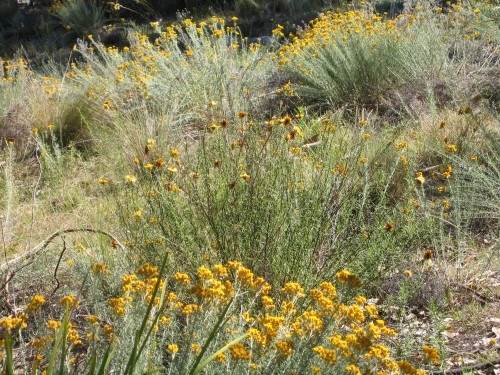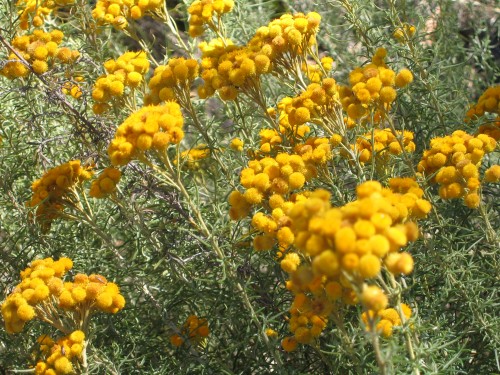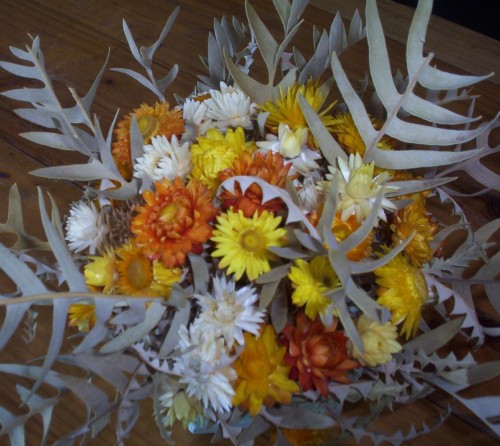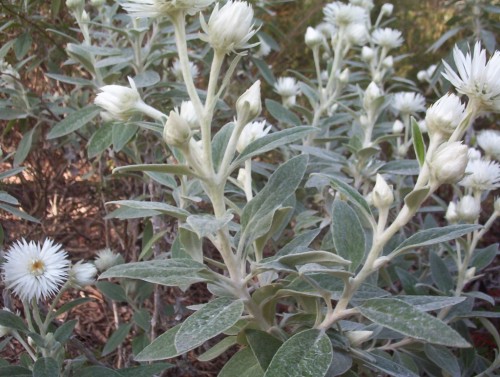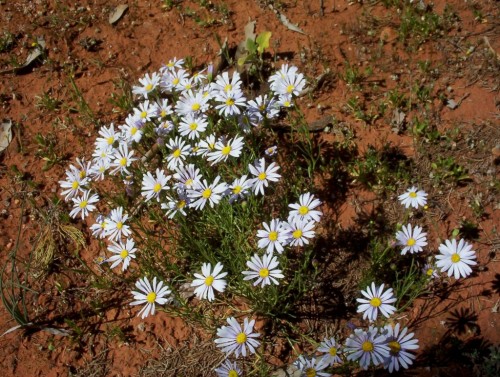Daisies in Cottage Gardens
A cottage garden is the ideal garden for many of the Australian native daisies. Chrysocephalum semipapposum (Clustered Everlasting) was growing in Canberra Botanic Gardens in a wild bush gardens which could have been turned into a cottage garden with its random planting arrangements.
The photo shows the ‘natural’ looking effect that can be achieved by planting several plants of a species in an irregular grouping, with other plants of different form, leaf and flower colour, and height.
Chrysocephalum semipapposum (Clustered Everlasting)
This is one of my favourite plants and it is a member of the daisy family. Members of The Daisy Study Group had several forms of Chrysocephalum semipapposum growing. Chrysocephalum used to be Helichrysm.
It is a variable species with grey to green leaves which vary in width from quite fine to a coarser leaved form. It has clusters of small yellow flowers, which, if picked quite early in the flowering stage, will keep as an everlasting. If picked to late the flower will continue to open and the seeds will fluff out.
The plants grow from 50-80cm tall and make clumps up to a metre wide. Flowering is from Spring through to autumn so they are good value in the garden, especially in a cottage garden setting. The plants shoot from the bottom, so when the first signs of shooting appear, it is time to chop the clumps back to the new growth.
This plant is hardy in most situations and grows in full sun to filtered or part sun. It withstands periods of dryness but does best with extra moisture. The plant is suitable for heavy clay, loams and sand.
Paper daisies in floral arrangements
Helichrysm elatum (Tall White Everlasting)
This plant can grow between one to two metres tall. The flowers are often in clusters. Although plants flower in spring in the wild, in garden conditions this flowering continues into summer. The plant needs root protection and a semi shaded position. The plant will also grow in exposed coastal positions.
Helichrysm elatum is a good plant for cut flowers. The flowers can also be wired and dried and this needs to be done before the buds open.
This plant originates in Victoria, NSW, and Qld, on tablelands, coast and foothills. It is generally found in shade among rocks in rich soils.
Minuria leptophylla (Minnie Daisy)
When I took the photo of the Olearia pimelioides, Minuria leptophylla was growing nearby and I have seen masses of this plant also. This added weight to my demand to stop and see what they were. After that they seemed to be everywhere.
Minuria leptophylla is a perennial plant which dies back in the heat and dryness of summer, to reshoot after autumn rains. The plant is 5-20cm tall. The flowers are white mainly with pinks and purples being available at times and seem too large for such a small plant. It grows on most soil types.
From a farming point of view, stock graze this plant and it is valuable for this purpose. In the garden it would make a great border plant and if the water was available to give it good garden conditions, it would flower for most of the year.
